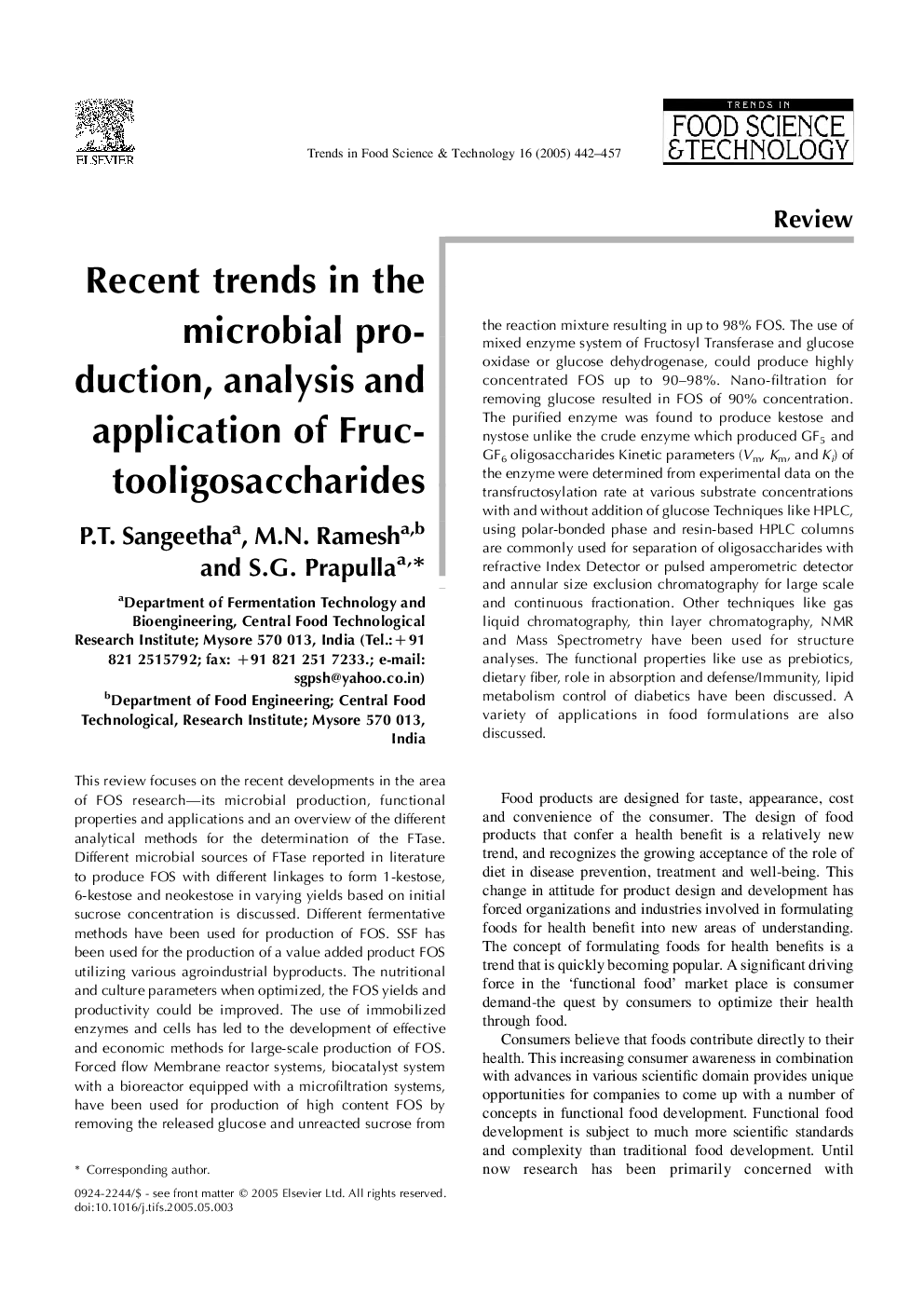| Article ID | Journal | Published Year | Pages | File Type |
|---|---|---|---|---|
| 10895019 | Trends in Food Science & Technology | 2005 | 16 Pages |
Abstract
This review focuses on the recent developments in the area of FOS research-its microbial production, functional properties and applications and an overview of the different analytical methods for the determination of the FTase. Different microbial sources of FTase reported in literature to produce FOS with different linkages to form 1-kestose, 6-kestose and neokestose in varying yields based on initial sucrose concentration is discussed. Different fermentative methods have been used for production of FOS. SSF has been used for the production of a value added product FOS utilizing various agroindustrial byproducts. The nutritional and culture parameters when optimized, the FOS yields and productivity could be improved. The use of immobilized enzymes and cells has led to the development of effective and economic methods for large-scale production of FOS. Forced flow Membrane reactor systems, biocatalyst system with a bioreactor equipped with a microfiltration systems, have been used for production of high content FOS by removing the released glucose and unreacted sucrose from the reaction mixture resulting in up to 98% FOS. The use of mixed enzyme system of Fructosyl Transferase and glucose oxidase or glucose dehydrogenase, could produce highly concentrated FOS up to 90-98%. Nano-filtration for removing glucose resulted in FOS of 90% concentration. The purified enzyme was found to produce kestose and nystose unlike the crude enzyme which produced GF5 and GF6 oligosaccharides Kinetic parameters (Vm, Km, and Ki) of the enzyme were determined from experimental data on the transfructosylation rate at various substrate concentrations with and without addition of glucose Techniques like HPLC, using polar-bonded phase and resin-based HPLC columns are commonly used for separation of oligosaccharides with refractive Index Detector or pulsed amperometric detector and annular size exclusion chromatography for large scale and continuous fractionation. Other techniques like gas liquid chromatography, thin layer chromatography, NMR and Mass Spectrometry have been used for structure analyses. The functional properties like use as prebiotics, dietary fiber, role in absorption and defense/Immunity, lipid metabolism control of diabetics have been discussed. A variety of applications in food formulations are also discussed.
Related Topics
Life Sciences
Agricultural and Biological Sciences
Food Science
Authors
P.T. Sangeetha, M.N. Ramesh, S.G. Prapulla,
